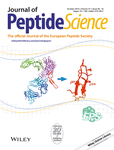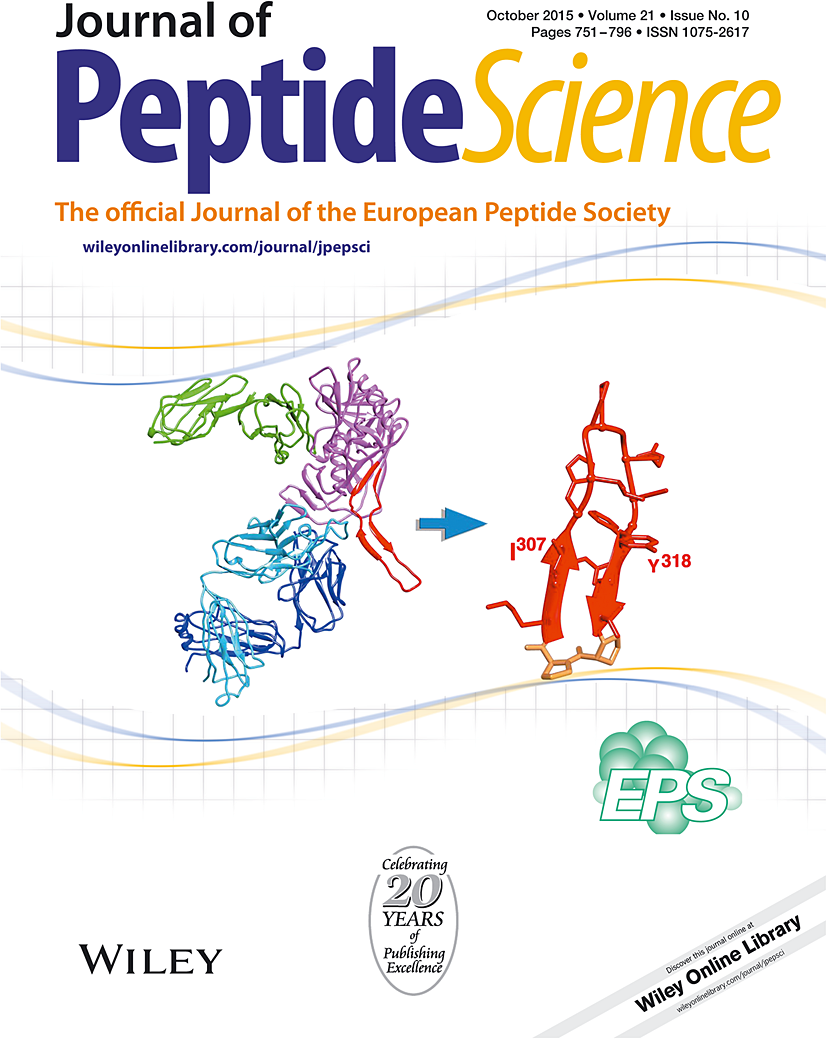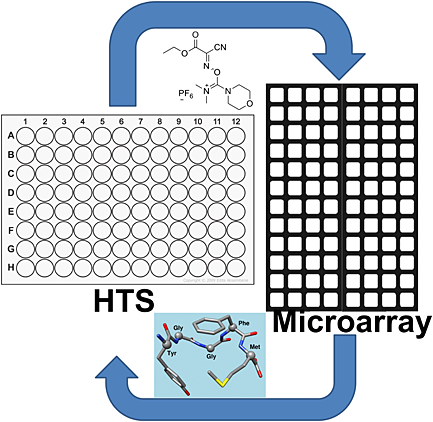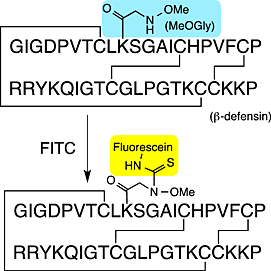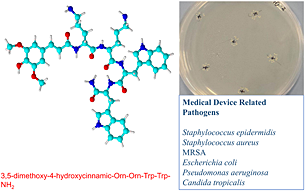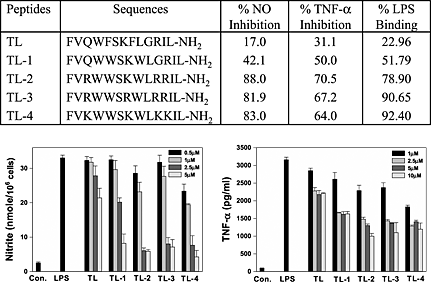Journal list menu
Export Citations
Download PDFs
Issue Information
Rapid communication
Easy parallel screening of reagent stability, quality control, and metrology in solid phase peptide synthesis (SPPS) and peptide couplings for microarrays
- Pages: 751-757
- First Published: 27 August 2015
Research articles
A novel cysteine-free venom peptide with strong antimicrobial activity against antibiotics-resistant pathogens from the scorpion Opistophthalmus glabrifrons
- Pages: 758-764
- First Published: 06 August 2015

A novel antimicrobial peptide, referred to as Opisin, was discovered from the scorpion Opistophthalmus glabrifrons. Opisin possesses strong antimicrobial activity against antibiotics-resistant pathogens, such as methicillin-resistant Staphylococcus aureus (MRSA) and vancomycin-resistant Enterococcus (VRE). This suggests that Opisin has great potential for the treatment of infections caused by MRSA and VRE.
Site-specific labeling of synthetic peptide using the chemoselective reaction between N-methoxyamino acid and isothiocyanate
- Pages: 765-769
- First Published: 11 September 2015
Anti-biofilm activity of ultrashort cinnamic acid peptide derivatives against medical device-related pathogens
- Pages: 770-778
- First Published: 27 August 2015
Enhancement of the anti-inflammatory activity of temporin-1Tl-derived antimicrobial peptides by tryptophan, arginine and lysine substitutions
- Pages: 779-785
- First Published: 27 August 2015
Facile and selective covalent grafting of an RGD-peptide to electrospun scaffolds improves HUVEC adhesion
- Pages: 786-795
- First Published: 11 September 2015
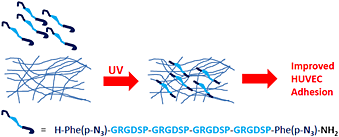
This study concerns the functionalization of poly-ɛ-caprolactone or poly(l-lactic acid-co-ɛ-caprolactone) electrospun scaffolds with a photoreactive peptide containing four Gly-Arg-Gly-Asp-Ser-Pro motifs. Different peptide densities on the scaffold surface were obtained by simply modifying the peptide concentration used in the scaffold pretreatment before UV irradiation. The scaffolds functionalized enhance adhesion of human umbilical vein endothelial cells at 24 h with a dose-dependent effect.




